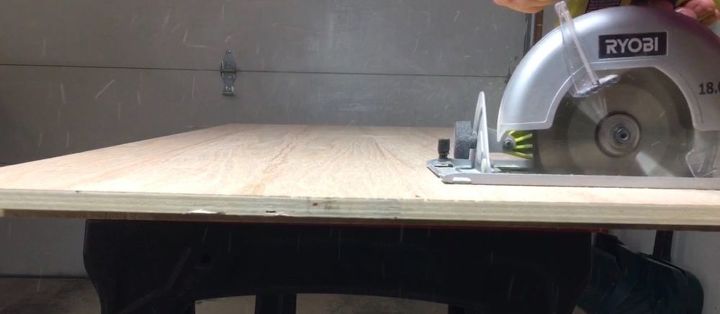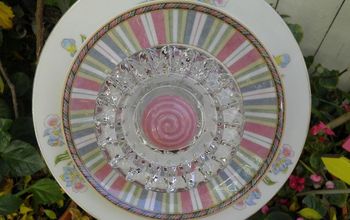Hiding Wires - Making a False Panel

by
Alicia W
(IC: paid contributor)
4 Materials
$20
4 Hours
Easy
I don’t know about you, but I hate to see ugly wires hanging down from my television. I decided to make a false panel to hide that eyesore.
I began by measuring the space.
I purchased a two pieces of 2’ x 4’ x 1/2” oak. I wanted something a little heavier than thin plywood and believe it or not, the oak was cheaper than thicker piece of plywood.
The first piece of oak didn’t need to be cut but I need to cut a small piece off of the second piece of oak, so the measurement was correct, which I did with a circular saw.
I painted both pieces white to match the bookshelves where the false panel would be placed.
Once the pieces were dry, I flipped them onto their fronts so the back side was up, lining the edges up together.
Depending on where you want to place your false panel, you can skip this part but mine had to go into a bookshelf that had a 4” edge on each side. I needed to make the false panel so that I could easily place it into the bookcase without damage.
To do that, I added a door hinge to the back of the wood. This way I could fold the false panel enabling me to put it into the bookcase with damage.
I couldn’t find a hinge that fit my wood exactly so I purchased one that was bigger (and on clearance).
I measured the hinge then used a tin snip to cut each side.
I then folded the hinge in half at the cuts and it broke in half.
I placed the hinge between the two pieces of oak and attached it using the screws that were included with the hinge.
I placed the false panel into the bookcase easily.
To keep the panel from fallling over, I attached a piece of 1”x2” scrap pine to the left side (the side without the small hinged piece).
I put the false panel in front of the 1”x2” piece.
I added a piece of cove moulding cut to size to the outside edge, sandwiching the false panel between each piece.
I also ran a piece of cove moulding to the bottom of the false panel to secure it in place.
To remove the panel, all I have to do is bend the smaller piece back using the hinge, then tilt the panel back and remove it.
Looks 1000 times better than it did. No more ugly cords.
Enjoyed the project?
Resources for this project:
See all materials
Any price and availability information displayed on [relevant Amazon Site(s), as applicable] at the time of purchase will apply to the purchase of this product.
Hometalk may collect a small share of sales from the links on this page.More info
Published January 29th, 2018 10:52 AM
Comments
Join the conversation
2 of 10 comments
-
 Carrie Curtis
on Mar 08, 2018
Carrie Curtis
on Mar 08, 2018
My only suggestion would have been to attach the small hinge piece to the underside of the shelf with screws and then when you want to access it, all you have to do is lift the larger piece from the bottom and maybe have a hook and eye to secure it up while you do what you need to do.
-
-
 Jonnie Lana Snook Barnes
on Mar 08, 2018
Jonnie Lana Snook Barnes
on Mar 08, 2018
Really like your idea gr8 job Kuddos. We're in a small 2bdrm apt and use pvc pipe, gorilla glue to wall. Works gr8 for us. Really hate a wire cluttred mess. Ty
-









































Frequently asked questions
Have a question about this project?
Alecia, Did you check your local electrical codes before doingthis job? You may be in violation. In accordance with most electrical/fire codes, power cords (and especially power strips) should never be concealed. If they should heat up (or get chewed upon by a rodent), you could have a serious smoldering/fire issue on your hands. Here in NYC, the only electrical conductors that are permitted to be conceiled is Bx armored cable. ...Joe, Staten Island
How do I get instructions for this project?